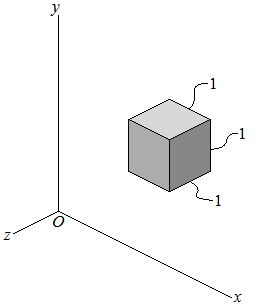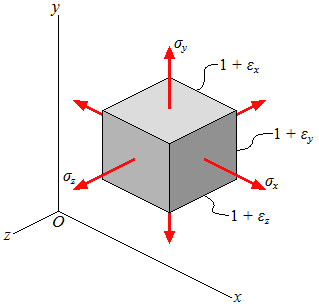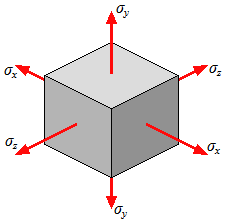

| Multiaxial Loading and Generalized Hooke's Law |
| strain in x direction, generalized Hooke's law | ||||||||||||||
| strain in y direction, generalized Hooke's law | ||||||||||||||
| strain in z direction, generalized Hooke's law |
| ε | strain |
| σ | stress |
| E | Young's modulus |
| ν | Poisson's ratio |

 |  |
| Unstressed | Stressed |
| (Eq1) |
|
| (Eq2) |
|
| (Eq3) |
|